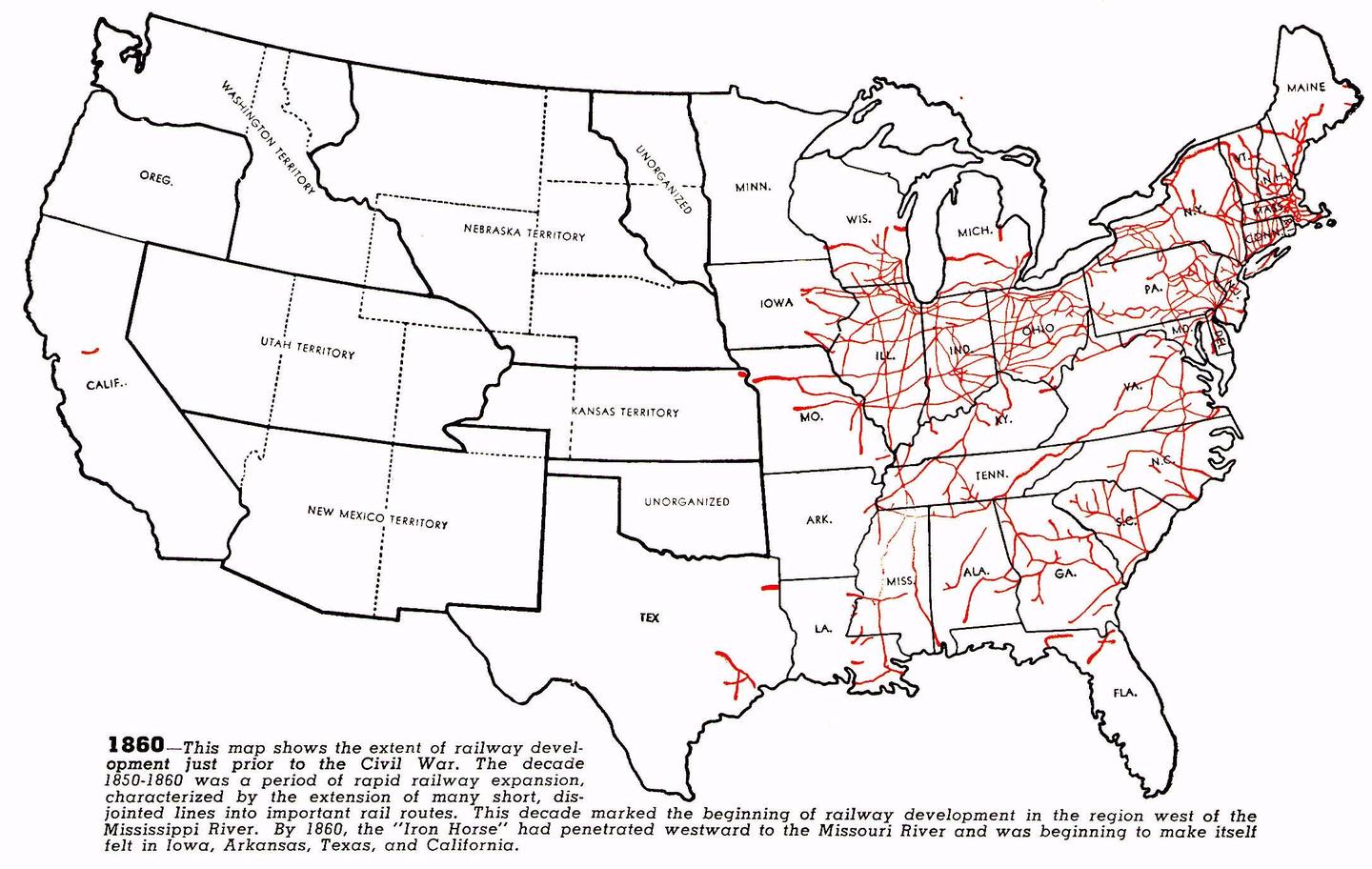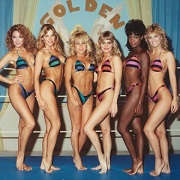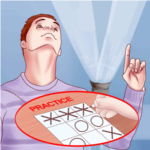|
Forgot to do one of these last week, so you get two articles today! M4A2 in Soviet service Sherman Jumbo Queue: T-54, T-44 prototypes, T-44 prototypes second round, T-44 production, Soviet HEAT anti-tank grenades, T-34-85M, Myths of Soviet tank building: interbellum tanks, Light Tank M24, German anti-tank rifles, PT-76 modernizations, ISU-122 front line impressions, German additional tank protection (zimmerit, schurzen, track links), Winter and swamp tracks, Paper light tank destroyers, Allied intel on the Maus , Summary of French interbellum tank development, Medium Tank T20, Medium Tank T23, Myths of Soviet tank building, GMC M10, Tiger II predecessors, Pz.Kpfw.IV Ausf.H-J,IS-6, SU-101/SU-102/Uralmash-1, Centurion Mk.I, SU-100 front line impressions, IS-2 front line impressions, Myths of Soviet tank building: early Great Patriotic War, Influence of the T-34 on German tank building, Medium Tank T25, Heavy Tank T26/T26E1/T26E3, Career of Harry Knox, GMC M36, Geschützwagen Tiger für 17cm K72 (Sf), Early Early Soviet tank development (MS-1, AN Teplokhod), Career of Semyon Aleksandrovich Ginzburg, AT-1, Object 140, SU-76 frontline impressions, Creation of the IS-3, IS-6, SU-5, Myths of Soviet tank building: 1943-44, IS-2 post-war modifications, Myths of Soviet tank building: end of the Great Patriotic War, Medium Tank T6, RPG-1, Lahti L-39, T-80 T-62 T-64 T-72A comparative trials, American tank building plans post-war, German tanks for 1946, HMC M7 Priest, GMC M12, GMC M40/M43, ISU-152, AMR 35 ZT, Soviet post-war tank building plans, T-100Y and SU-14-1, Object 430, Pz.Kpfw.35(t), T-60 tanks in combat, SU-76M modernizations, Panhard 178 Available for request (others' articles):  Shashmurin's career BT-7M/A-8 trials Voroshilovets tractor trials T-55 underwater driving equipment  Light Tank T37 Light Tank T41 Medium Tank M46 Modernization of the M48 to the M60 standard  Pre-war and early war British tank building 15 cm sFH 13/1 (Sf) Oerlikon and Solothurn anti-tank rifles German tank building trends at the end of WW2 Pz.Kpfw.III/IV Evolution of German tank observation devices 43M Zrínyi
|
|
|
|

|
| # ? Apr 26, 2024 13:14 |
|
Anyone watched this yet? https://www.youtube.com/watch?v=ltSvPE8xw3A (You had me at Centurion!)
|
|
|
|
Cessna posted:Anyone watched this yet? O my god that looks good.
|
|
|
|
Cessna posted:Anyone watched this yet? I couldn’t get past the terrible dub. Maybe I will try again if otherwise it’s good.
|
|
|
|
It's looks great. drat streaming service paywalls.
|
|
|
|
|
Biographical note from "Rockets and People": quote:19. Iosif Samuilovich Shklovskiy (1916–85), head of the radio-astronomy department at the Shternberg Astronomical Institute, was one of the most prominent Soviet astronomers of the 20th century. His memoirs were published posthumously in English as Five Billion Vodka Bottles on the Moon: Tales of a Soviet Scientist (New York: W. W. Norton, 1991)
|
|
|
|
Used copy, $16 on Amazon.
|
|
|
|
WW2 Data Part 16 of Mines and Grenades is here, with another trio of Rifle Grenades. One of these is generously given the title of Rifle Grenade, when in reality it is used with an anti-tank gun. The other two are deployed with the 3cm discharger cup, otherwise known as a Schiessbecher. How do they all operate? What happens if the anti-tank gun fired munition only grazes its target? All that and more at the blog!
|
|
|
|
So...This was just announced for pre-order. 2400 figures (3000 for the pre-order and 15 cannons). 15 Regiments each side.  (edit there is that better?) So....I am now in need of what books to read to how to fight like it's the American Civil War at the regimental level. Any recommendations? Comstar fucked around with this message at 05:02 on Dec 22, 2020 |
|
|
|
You rat bastard. Now I have to sell a kidney to get a nerdy game that no one will ever play with me.
|
|
|
|
Xiahou Dun posted:You rat bastard. Now I have to sell a kidney to get a nerdy game that no one will ever play with me. The pre-order is free shipping and was $303 Aussie dollerroos. Shipping in February. 10 cents a figure PLUS you're getting 6 extra regiments, buildings for Gettysburg and 2 extra Generals. And a signed rule book. This is insane and you don't need a kidney for it AND you pay for it now before 27th December and you're getting in front of both brexit AND the covid nightmare getting worse, at least for cost of it. I suspect there may be a delay.
|
|
|
|
O I know, and I hope you appreciate the "rat bastard" part was in jest and not meant harmfully ; it's just the holidays so I immediately had to go to my bank account and start doing math to see if I could afford this. It looks really cool and if I can get like my sister or someone who'll actually play it to go in with me I'm gonna snap it up. Xiahou Dun fucked around with this message at 05:12 on Dec 22, 2020 |
|
|
|
What was a reasonable engagement range for a field gun in the early ACW? I stopped by the Bull Run battlefield today and was trying to figure out how far the artillery was able to land hits from. The pieces on display were marked as 6 pounders for the most part.
|
|
|
|
Comstar posted:So...This was just announced for pre-order. Don't hotlink images.
|
|
|
|
oXDemosthenesXo posted:What was a reasonable engagement range for a field gun in the early ACW? About a mile with roundshot for smoothbores. Rifled guns like the 3" were used for counterbattery because they were more accurate and had twice the range.
|
|
|
|
KYOON GRIFFEY JR posted:About a mile with roundshot for smoothbores. Rifled guns like the 3" were used for counterbattery because they were more accurate and had twice the range. What made the rifling and heavier artillery in the ACW possible compared to the Napoleonic era?
|
|
|
|
oXDemosthenesXo posted:What was a reasonable engagement range for a field gun in the early ACW? That being said, I'm not sure how frequently they were actually able to engage at the limits of their range outside of sieges/bombardments. Many civil war battles were fought in more or less wooded, broken terrain where the opposing line might only become visible when they were 800yards away.
|
|
|
|
Comstar posted:What made the rifling and heavier artillery in the ACW possible compared to the Napoleonic era? Vast improvements in industrial steel production technology.
|
|
|
|
Kaiser Schnitzel posted:It depends. The confederacy had many very fewer rifled guns than the union, and mostly used the 12lb Napoleon-a smoothbore gun that was basically unchanged from 1815. It could shoot accurately to a mile or so. Rifled guns became more common, especially in the later war and especially on the union side, and were considerably more accurate and longer ranged (a 10-lber parrot field gun had a max range of around ~4500 yards). It's my understanding that they also more commonly used explosive shells than simple solid shot which further increased their deadliness. Big naval and siege guns could shoot up to 7000+ yards. Smoothbores and rifles could also shoot cannister with an effective range of 300-400 yards. The big indicator for the effectiveness of artillery in the ACW is the changes that occurred in infantry tactics: the battlefield column just ceases to be a formation anyone uses. Very very quickly people realise you can't do the Napoleonic thing of marching up to just outside musket range in column and then deploy into line, instead you have to pick a start-line that's safe to form up in, then cross the battlefield in line to present as small a target as possible.
|
|
|
|
Panzeh posted:Vast improvements in industrial steel production technology. Not steel yet, as the Bessemer process had been proven but not operationalized. But there were improvements in metallurgy and processes with cast and wrought iron. The Confederates had a hard time building certain kinds of guns, particularly rifled guns, due to limitations in technology.
|
|
|
|
Alchenar posted:The big indicator for the effectiveness of artillery in the ACW is the changes that occurred in infantry tactics: the battlefield column just ceases to be a formation anyone uses. Very very quickly people realise you can't do the Napoleonic thing of marching up to just outside musket range in column and then deploy into line, instead you have to pick a start-line that's safe to form up in, then cross the battlefield in line to present as small a target as possible. This was also a function of the use of rifled muskets. Effective range of a rifled musket is 3-5x that of a smoothbore musket, so you're pushing that musket range bubble out considerably and you become much more vulnerable to flanking movements.
|
|
|
|
Why did Warspite have casemate guns? I thought those were obsolete post Dreadnought. Were they used at all in bombardments?
|
|
|
|
Comstar posted:What made the rifling and heavier artillery in the ACW possible compared to the Napoleonic era? Kaiser Schnitzel posted:The confederacy had many very fewer rifled guns than the union, and mostly used the 12lb Napoleon-a smoothbore gun that was basically unchanged from 1815. That's incorrect, sorry. Metallurgy allowed drastic improvements, to be sure, but there were other supporting factors. And it's not just rifles/rifling, smoothbores were drastically improved. For one – and perhaps most importantly – stronger metal meant that shells became something a field piece could fire from the time of the French Canon obusier. Yes, most of the time they fired solid shot, but that extra capability gave artillery a lot of flexibility they didn’t have before. Another result of better metals was that guns could fire a significantly larger powder charge. Prior the 1840s the "rule of thumb" was that a cannon could use a gunpowder charge equal to 1/7th the weight of the shot. By the 1850s as a result of trials sponsored by Louis Napoleon (the man the "Napoleon" of the Civil War was named after, NOT Bonaparte) this had increased by quite a bit, up to 1/3 of the weight of shot. In practice they'd shoot a less than 4 lb powder charge, but that's still a huge increase; that 1857 12 Pounder Napoleon is firing with over double the gunpowder of an artillery piece of a cannon of a generation before. This is huge, because it increases the muzzle velocity of the gun, making it much more accurate. Flatter trajectory equals more accurate fire, as the gunners don’t have to estimate range and “lob” shot to the same extent. This improved metallurgy also allowed a decrease in the weight of the gun's barrel. That Civil War cannon had a barrel that weighted about 3/4 the weight of earlier 12 Pounders. This allowed them to mount it on a much lighter - and soon reengineered - carriage and limber. The carriage itself also saw a lot of changes. Because the gun could fire shells as a howitzer they looked at the design of the gun and ended up moving the trunnions back, which changed the center of gravity on the gun and transferred more recoil to the ground - making it a more steady firing platform and making the gun much easier for its crews to handle, aim, and limber/unlimber. Also, as an aside, the old French 12 Pounders (and their 8 Pounders) required a thing called “encastrement.” The crew had to shift the gun’s barrel in its carriage for firing and limbering, a maneuver requiring a lot of strength and slowed down its employment. The new carriages didn’t need this – you just unlimbered and started shooting. As a result of these improvements they could cut the size of the crew – a 12 Pounder of the early 1800s had a crew of fifteen men, a 12 Pounder of the 1860s had a crew of eight. Both could be fired by less in an emergency, but that’s still almost cutting the manpower required in half. These aren't revolutionary changes, they're all evolutionary. It sure looks superficially similar, but the smoothbore 12 Pounder of the 1860s is a drastically different beast than those of 1815. It's stronger, lighter, more accurate, requires half of the crew, is more tactically flexible, and it is much more powerful. Cessna fucked around with this message at 23:33 on Dec 23, 2020 |
|
|
|
Morholt posted:Why did Warspite have casemate guns? I thought those were obsolete post Dreadnought. Were they used at all in bombardments? Casemate guns remained for the secondary batteries for at least a generation or two of Dreadnoughts until they were finally replaced by turreted secondaries. IIRC the Warspite suffered from some of its casemates being unusable in any sort of rough sea condition. The US for example used casemate mounts for their secondaries until the North Carolina class, the planned but cancelled South Dakota (1920) class would have had casemates for most of its secondary guns as well. The UK stopped with the casement secondaries with the planned N3s and the actually built Nelson class. Casemates are lighter than turrets but are more limited in many ways, especially once the secondaries became important for DP roles. Taerkar fucked around with this message at 17:23 on Dec 22, 2020 |
|
|
|
Cessna posted:Louis Napoleon (the man the "Napoleon" of the Civil War was named after, NOT Bonaparte) Going to be pedantic here but he most certainly was a Bonaparte.
|
|
|
|
feedmegin posted:Going to be pedantic here but he most certainly was a Bonaparte. True; let's go with "Napoleon III, not Napoleon I."
|
|
|
|
Xiahou Dun posted:You rat bastard. Now I have to sell a kidney to get a nerdy game that no one will ever play with me. Yes, this is a perfect time to have bought a big pile of 28mm ACW soldiers that no one will be interested in by the time I finish painting them.
|
|
|
|
Cessna posted:Yes, this is a perfect time to have bought a big pile of 28mm ACW soldiers that no one will be interested in by the time I finish painting them. Grab a bunch of 6mm too and do Sherman's Travels
|
|
|
|
Cessna posted:That's incorrect, sorry. Given that the smoothbore 12lbers were more capable than I thought, was there a huge difference in capability and effectiveness between union vs. confederate artillery?
|
|
|
|
Cessna posted:Yes, this is a perfect time to have bought a big pile of 28mm ACW soldiers that no one will be interested in by the time I finish painting them. I will play agaisnt you once if you will play against me at ASL 8,000 times.
|
|
|
|
Kaiser Schnitzel posted:Given that the smoothbore 12lbers were more capable than I thought, was there a huge difference in capability and effectiveness between union vs. confederate artillery? Confederate artillery had a lot of big disadvantages. First and foremost, they started off using the same guns, but the Union had the industry to replace old guns with newer, better guns as the war went on. The Confederates were stuck with old, worn out guns, including obsolete 6-pounders. They did manage to manufacture some artillery, but what they made was pf poor quality due to shortages. Because they had relatively few pieces their guns were deployed in 4-gun batteries, compared to the Union's 6-gun batteries. In addition, the Confederates were often forced to mix gun types in a battery, which was bad for logistics. Also, artillery of the era was very dependent on horses, and the South was poorly served here. Generally (there are lots of exceptions) the Confederates used four horses per gun, while the Union used a six horses per gun. Sometimes the Confederates were forced to use mules, which were a poor substitute. This restricted both their tactical and strategic mobility These factors led to the Union having, broadly speaking, fire superiority over an equivalent Confederate force. This is one of the reasons why the Confederacy liked fighting close, either in terrain that restricted ranges or through charging into contact. Cessna fucked around with this message at 20:54 on Dec 22, 2020 |
|
|
|
Jobbo_Fett posted:I will play agaisnt you once if you will play against me at ASL 8,000 times. I'm not a big ASL fan,* but I'd be happy to go against you in any number of other hex-and-counter wargames. * (Edit: There's just too much stuff. I played back in the day, but had to sell off what I had when I was in the service due to the space it took up. Now I have the space, but there's just so much stuff - the price of entry at the level I'd want to get into it in would be a lot.) Cessna fucked around with this message at 18:06 on Dec 22, 2020 |
|
|
|
Cessna posted:Confederate artillery had a lot of big disadvantages. Did the south really have a cavalry advantage early war? It's one of those things I see thrown around as true but no one can really explain why. I'd buy that you make a better cavalryman if you're already familiar with riding and shooting but the north wasn't lacking in farmboys. I suspect it's a truism we throw around in the south as a low key part of the Lost Cause.
|
|
|
|
I’ve always seen stuff like that as part of the “horse race” tendency that pop culture loves. It’s just no fun to admit that the South was in an objectively worse position in nearly every way.
|
|
|
|
Edgar Allen Ho posted:Did the south really have a cavalry advantage early war? It's one of those things I see thrown around as true but no one can really explain why. I'd buy that you make a better cavalryman if you're already familiar with riding and shooting but the north wasn't lacking in farmboys. I suspect it's a truism we throw around in the south as a low key part of the Lost Cause. Yes, they did, but this isn't a matter of Southern superiority at all; it was a matter of the South having worse infrastructure. The roads were less developed in the South, and the ones that they had were poor, which led to more practice riding across terrain. Other transportation infrastructure in the South was even worse:  The North had good roads and alternatives to horses. Trains, streetcars, carriages, etc. In the South if you wanted to get somewhere you took a horse cross-country, which gave them more practice doing that sort of thing.
|
|
|
|
Also it's not a bit of the story that's talked about much by people espousing CONFEDERATE CAVALRY SUPERIORITY, but a willingness to use those forces for raids into the interior of the North which were very war-crimey was a strategic use for them that the North didn't mirror.
|
|
|
|
Edgar Allen Ho posted:Did the south really have a cavalry advantage early war? It's one of those things I see thrown around as true but no one can really explain why. I'd buy that you make a better cavalryman if you're already familiar with riding and shooting but the north wasn't lacking in farmboys. I suspect it's a truism we throw around in the south as a low key part of the Lost Cause. Partially it's because the southerners had all the Kentucky thoroughbreds. This evened out after about a year of fighting.
|
|
|
|
Alchenar posted:Also it's not a bit of the story that's talked about much by people espousing CONFEDERATE CAVALRY SUPERIORITY, but a willingness to use those forces for raids into the interior of the North which were very war-crimey was a strategic use for them that the North didn't mirror. The Union did do cavalry raids. The Chambersburg/Chickahominy raid of 1862, or Grierson's Raid (part of Vicksburg) for examples. But, yes, they weren't as common, or as into rounding up innocent people and forcing them into slavery. For another unpleasant fact, in the pre-war South mounted patrols of slave catchers were relatively common, giving southerners another way of practicing their cavalry skills.
|
|
|
|
Cessna posted:Anyone watched this yet? This looks amazing and with high production value similar to Chernobyl! Theres going to be part of an episode (or an entire one) dedicated to Zvika Greengold as he single handedly stops a Syrian armored battalion and people who don't know about him are going to call it historically inaccurate.
|
|
|
|

|
| # ? Apr 26, 2024 13:14 |
|
PeterCat posted:Partially it's because the southerners had all the Kentucky thoroughbreds. This evened out after about a year of fighting. Kentucky itself was a border state, and many of the horse breeders were rich Northern industrialists who shipped their horses north as war threatened.
|
|
|






























